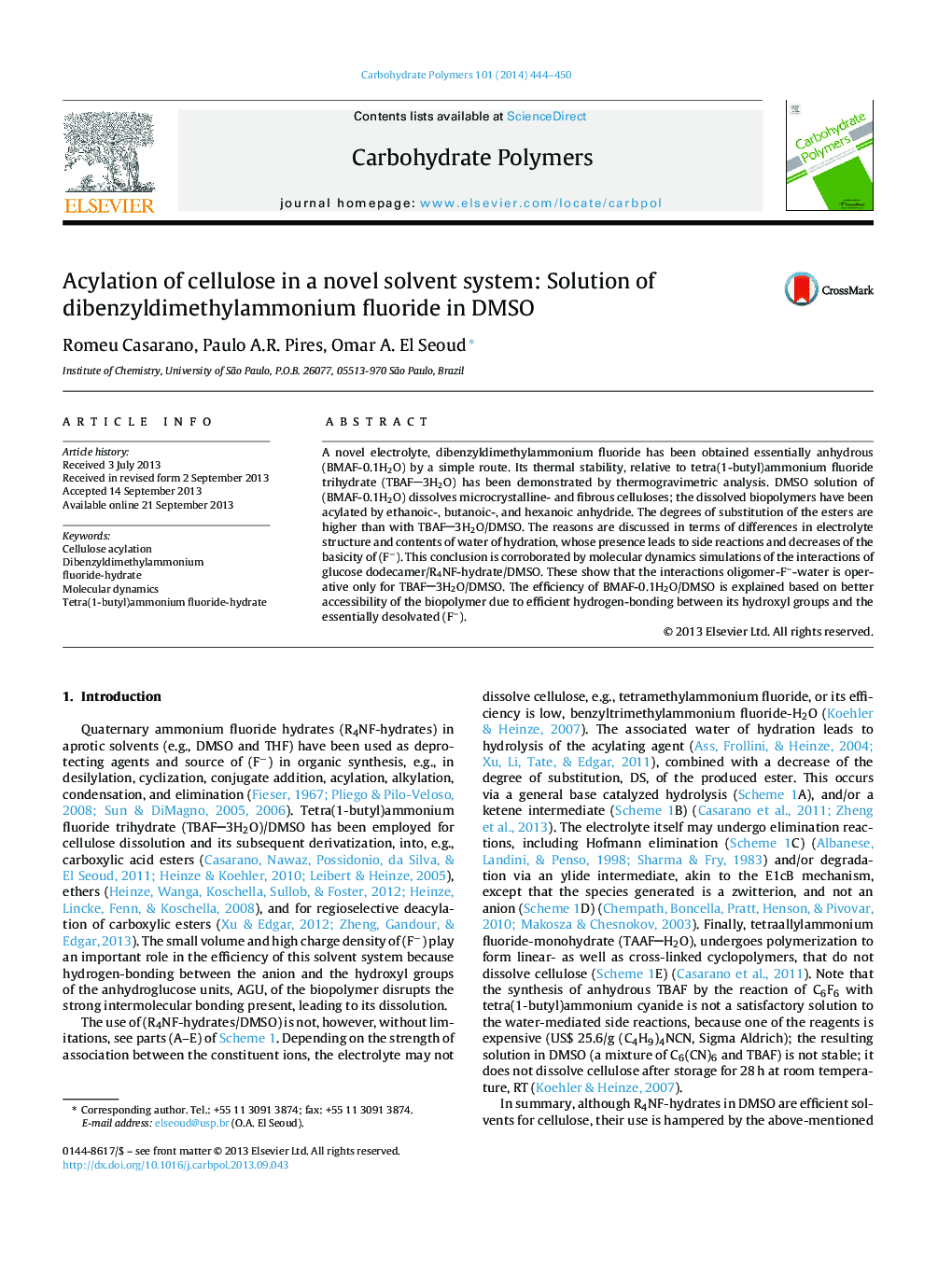| Article ID | Journal | Published Year | Pages | File Type |
|---|---|---|---|---|
| 7792888 | Carbohydrate Polymers | 2014 | 7 Pages |
Abstract
A novel electrolyte, dibenzyldimethylammonium fluoride has been obtained essentially anhydrous (BMAF-0.1H2O) by a simple route. Its thermal stability, relative to tetra(1-butyl)ammonium fluoride trihydrate (TBAF3H2O) has been demonstrated by thermogravimetric analysis. DMSO solution of (BMAF-0.1H2O) dissolves microcrystalline- and fibrous celluloses; the dissolved biopolymers have been acylated by ethanoic-, butanoic-, and hexanoic anhydride. The degrees of substitution of the esters are higher than with TBAF3H2O/DMSO. The reasons are discussed in terms of differences in electrolyte structure and contents of water of hydration, whose presence leads to side reactions and decreases of the basicity of (Fâ). This conclusion is corroborated by molecular dynamics simulations of the interactions of glucose dodecamer/R4NF-hydrate/DMSO. These show that the interactions oligomer-Fâ-water is operative only for TBAF3H2O/DMSO. The efficiency of BMAF-0.1H2O/DMSO is explained based on better accessibility of the biopolymer due to efficient hydrogen-bonding between its hydroxyl groups and the essentially desolvated (Fâ).
Keywords
Related Topics
Physical Sciences and Engineering
Chemistry
Organic Chemistry
Authors
Romeu Casarano, Paulo A.R. Pires, Omar A. El Seoud,
